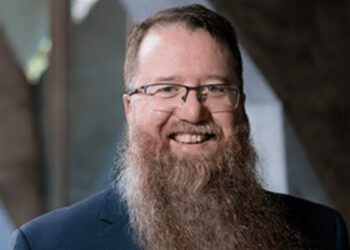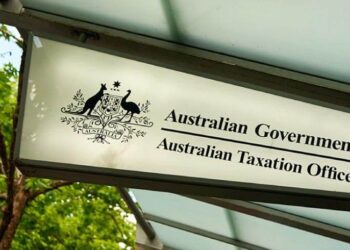The decision on Sutton v NRS(J) Pty Ltd [2020] NSWSC 826 involved a discretionary trust established in 17 August 1972 for the benefit of the family of the plaintiff, Mr Neil Raymond Sutton. While the case involved a missing deed for a discretionary trust, it also has implications for SMSFs, according to DBA Lawyers senior associate William Fettes.
The trust in this case was established with a settled sum of $100 and then was essentially left dormant for a period of over 30 years. However, from around 2007 onwards, Mr Sutton decided to activate the trust. Accordingly, a portfolio of properties and businesses was subsequently settled on the trust.
Mr Sutton and his advisers had a photocopy of the signed original deed for the trust and acted on the basis that the trust was validly constituted and governed by the terms of the photocopied deed. The original signed deed for the trust could not be located.
Several of the banks used by the trust wished to sight the establishment deed for the trust to determine that the trust’s constituent documents were in order as part of their “know your customer” policy.
Due to the inability of the trustees of the trust to produce the original deed, one bank account used by the trust was frozen until the deed could be produced.
In seeking to obtain an original copy of the deed, Mr Sutton’s solicitor made inquiries to Clayton Utz, the relevant law firm who had acted both for Mr Sutton and his father at the time the trust was established.
As a result of these inquiries, a packet of documents was discovered containing an original will of Mr Sutton prepared for him by Clayton Utz and signed on 17 August 1972, and a separate photocopy of the trust deed. The photocopy was the same as the photocopy already in Mr Sutton’s possession.
Mr Sutton sought a declaration from the court as follows:
An order that the photocopy of a Deed made the 23rd day of October 1972 BETWEEN Frederick Walter Sutton (the Settlor) of the one part AND Laurie Frederick Sutton, David Bruce Sutton and Neil Raymond Sutton of the other part identified in the Affidavit of Neil Raymond Sutton filed in these proceedings is a true copy of the original Deed made the 23rd day of October 1972 BETWEEN Frederick Walter Sutton (the Settlor) of the one part AND Laurie Frederick Sutton, David Bruce Sutton and Neil Raymond Sutton of the other part identified in the Affidavit of Neil Raymond Sutton filed in these proceedings.
DBA Lawyers senior associate William Fettes said the counsel for Mr Sutton argued that a “presumption of regularity” should apply in the circumstances, referencing the case Re Thomson [2015] VSC 370 where the presumption was applied in relation to an unsigned SMSF deed.
However, the court stated it was unnecessary to rely on this presumption.
Justice Parker noted that in Re Thomson, the missing trust deed was evidenced only by an unsigned copy, but in the present case, there was no particular need to prove by inference that any formality had been complied with.
“The photocopy Trust Deed is signed and the evidence establishes directly that the parties concerned have always acted on the basis that it sets out the terms of the Presumed Trust,” Justice Parker said.
“In my opinion, the evidence makes it overwhelmingly likely that the photocopy Trust Deed is indeed a copy of an original which now cannot be found. This conclusion is supported, in particular, by the recent discovery of an identical copy of the Trust Deed in the records of Clayton Utz dated from 1972. In these circumstances, the court should assist those responsible for the administration of the presumed trust by ensuring that they can continue to administer it as if the photocopied Trust Deed were the trust’s constituting document.”
While there were difficulties in the court providing declaratory relief in the form sought by Mr Sutton, as an alternative it exercised its advice power under s 63 of the Trustee Act 1925 (NSW) to provide advice that:
- The trustees of the trust settled by Frederick Walter Sutton by Deed of Trust dated 23 October 1972 are justified in administering the trust on the basis that the document annexed to this order and marked “A” is a true copy of that Deed.
- The costs of all parties to these proceedings be paid out of the assets of the trust.
“This advice meant the trustees of the trust were effectively entitled to treat the photocopy of the deed possessed by Mr Sutton as the trust’s constituting document, subject to the original ever turning up,” Mr Fettes explained.
Mr Fettes said this decision of the New South Wales Supreme Court reinforces the importance of having original executed copies of all constituent trust documents, as judicial intervention was required in this case to address third-party bank concerns and a frozen bank account.
“The case also highlights that judicial advice under the trustee legislation in the relevant jurisdiction (there are equivalents to s 63 of Trustee Act 1925 [NSW] in other jurisdictions) may be an appropriate alternative to seeking declaratory relief, e.g. where the uncertainty arising is more a question of fact rather than a question law, and where all interested parties are not able to be included in the proceedings,” he said.
“As SMSFs are merely a type of trust, the case is also relevant for SMSFs. For example, an SMSF trustee could seek judicial advice under the relevant trustee legislation in relation to reliance on a photocopy or scan of a signed SMSF deed where the original could not be located, particularly where multiple photocopies or scans exist, as they did in Sutton, such that it was ‘overwhelmingly likely’ that the copy relied upon is a true copy of the original.”



And not only that, you can bet your bottom dollar that the original was ‘lost’ by a bank or less likely a another solicitor. They moment any client requires an original for a bank we ensure that they know NOT to leave it out of their sight and the bank must hand it back to them once they’ve copied it while they wait.
We’ve lost count of the number of deeds banks have ‘lost’.
I think you are being unfair. The Suttons didn’t have much choice in seeking to have the bank unfreeze the account. They could only get the court to do this and in order to do that they had to engage solicitors to act for them unless of course they are solicitors themselves. The real culprit was the bank!!
And it is the trustees’ job to hold the documents not the solicitor’s. Solicitors die or retire and don’t have hold client records for more than seven years. Never part with originals and always give certified copies.
So they paid thousands to lawyers and clogged up a court system for common sense to prevail, lawyers for you!!!